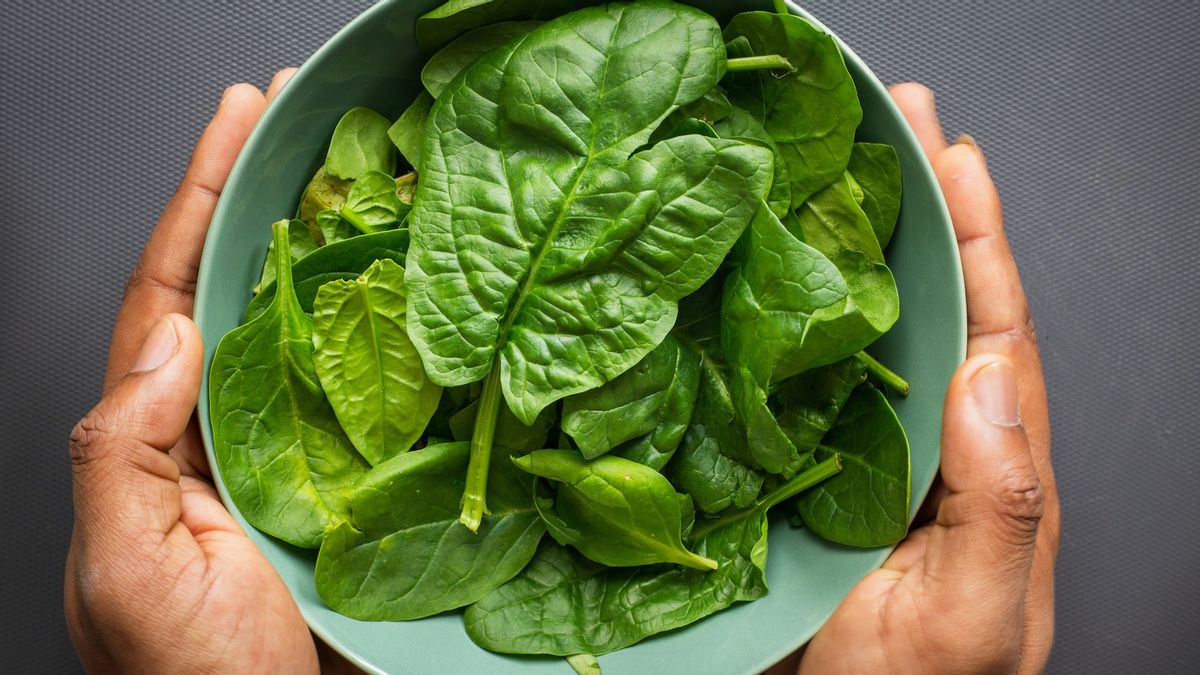YOGYAKARTA Selada and spinach are vegetables that are easy to get and process more varied. Starting from Western-style salads, Nusantara-style salads, or soupy vegetables on the dining table. However, from these two green vegetables, which one is healthier?
Of course, lettuce and spinach are both low in calories, containing fiber, vitamins, and minerals. In detail, here is an explanation of nutrients from lettuce and spinach.
Green leafy cellada contains more nutrients than pale lettuce. In one size, or 1 cup, lettuce leaves contain 5 calories, 0.49 grams of protein, and 0.05 fats. According to the United States Department of Agriculture Nutrition Database reported by Livestrong, Tuesday, September 13, spinach contains 7 calories, 0.86 grams of protein, and 0.12 grams of fat. While the fiber content is 0.5 grams and spinach 0.7 grams.
In a study from the Faculty of Agriculture, Gadjah Mada University, published in the journal Vegetalika Vol. 4 of 2015, consumption of 250 grams of spinach leaves can contribute to the daily needs of calcium of 12.3 percent and lettuce 6.4 percent.
Both lettuce and spinach are good sources of vitamin A. Selada contains 2,666 UI and spinach 2,813 UI. Based on recommendations from the Institute of Medicine, 1 cup of spinach provides about 100 percent of the recommended daily intake. While lettuce provides more than 80 percent. For the source of thiamin, spinach is more than lettuce.
In addition to vitamin A, lettuce contains 3.3 milligrams of vitamin C along with a small amount of riboflavin, niacin, and vitamin B6. Bayam has twice the amount of each of these vitamins. For folate content, spinach can be five times higher than lettuce.
Bayam has almost three times more calcium, iron, and potassium than lettuce leaves. Bayam also contains more magnesium and sodium than lettuce. This means, spinach is richer in mineral than lettuce. However, for the portion of consumption, adjust it to the daily needs of the body's minerals.
Bayam and green lettuce contain two important chrometoids, called luteins and euxanthins, both are antioxidants found in the eyes. Lutein and zaxanthin protect the eyes from blue light and are associated with a reduced risk of cataracts related to age and macular degeneration. In size, the antioxidants in spinach are 10 times more than lettuce.
That's the detailed explanation of nutrients, vitamins, and phytochemicals that are beneficial from spinach and lettuce. In principle, both are equally well consumed for health. However, based on the exact size, spinach is higher in good content than lettuce.
The English, Chinese, Japanese, Arabic, and French versions are automatically generated by the AI. So there may still be inaccuracies in translating, please always see Indonesian as our main language. (system supported by DigitalSiber.id)









